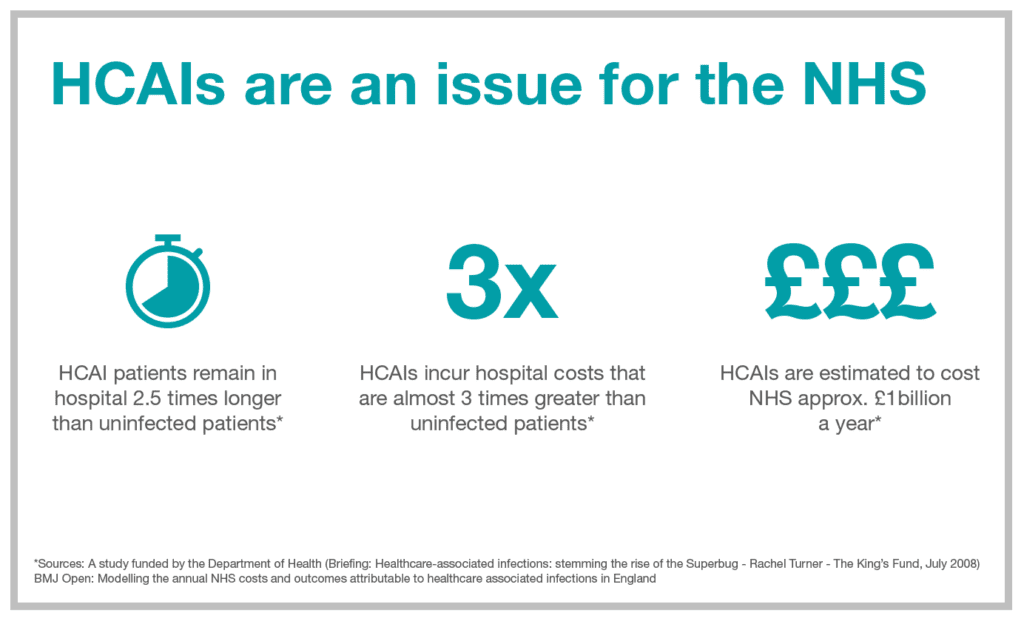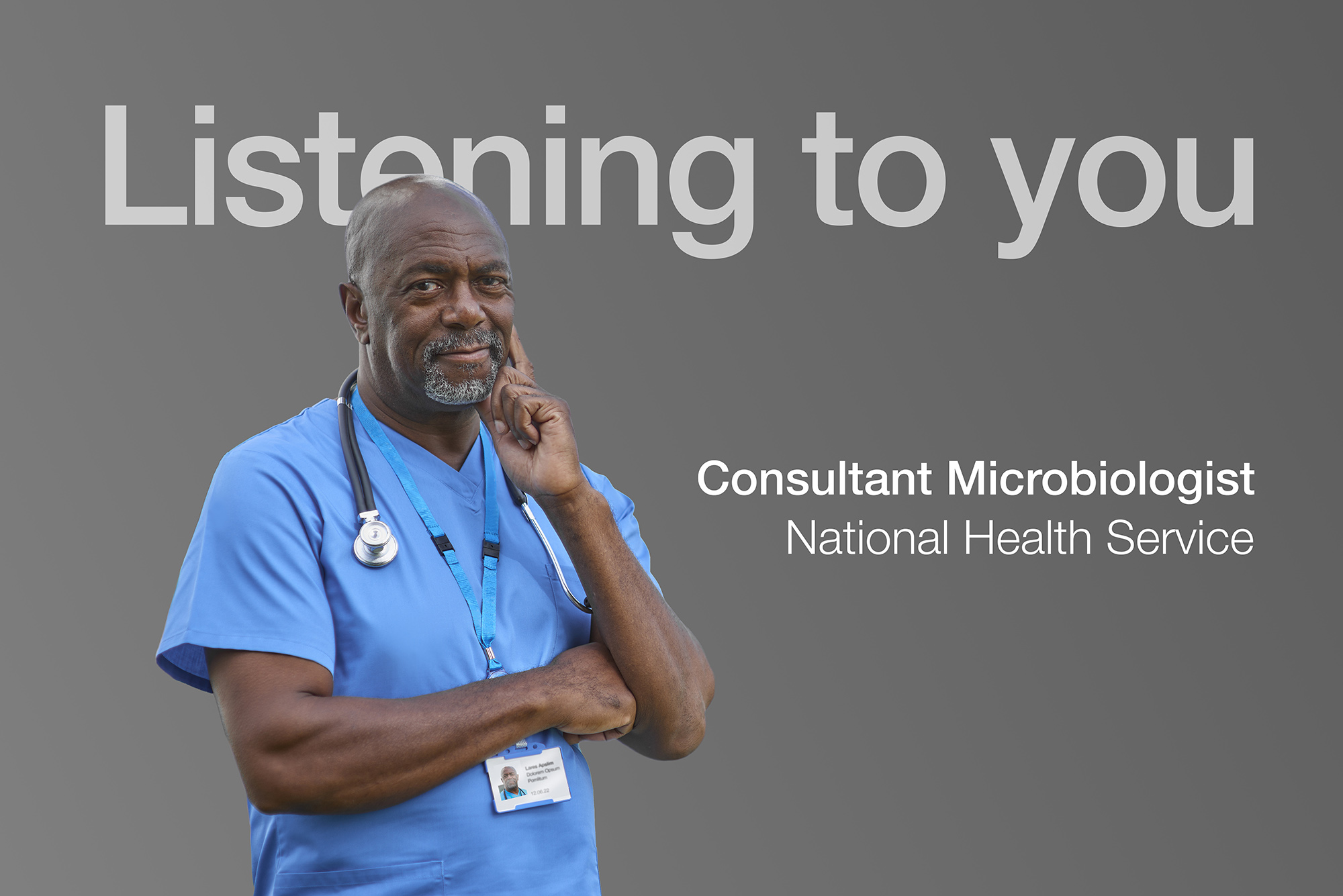“Everyone in hospital touches 10 things a minute… and every touch transfers infection to fingers and delivers infection from fingers.”
The potential speed of infection transmission is alarmingly fast and this is why infection control remains our biggest challenge and primary priority. Our work in innovation is all founded on this key threat to patient health; optimising the design of healthcare environments to prevent the spread of infection.
The best insights can only come from the frontline so we spoke to a consultant microbiologist, with 40 years’ worth of experience working in an NHS hospital, about the risks of an outbreak of infection in a hospital and the control measures he believes are effective contributors to prevention.
“When hospital outbreaks happen, they can be almost impossible to treat and the cost, in lives and money, can be frightening.”

“So how do you prevent infection? The top answers are always hand-hygiene and appropriate PPE. But what does hand-hygiene actually mean? Washing between patients? Of course. Washing between touch-points? Not so much.
But everyone in hospital touches ten things a minute, on average. Call buttons, door handles, laptops, bed rails, washbasin taps, bedside tables, cupboard doors, bed controls, phones, BP cuffs … and every touch transfers infection to fingers and delivers infection from fingers.
When was the last time you disinfected your computer keyboard? How many times did the cleaners clean the bed control panels today? How about inside the bedside cabinets? Or their castors? What about the computer trolley’s touch screen?”
Whilst there are certain physical methods for infection prevention that can be implemented, he believes that education and awareness is key to influencing a change in behaviour which, in turn, makes hospitals safer places.
“The key is education. When people know how often they touch things, they change behaviour and make hospitals safer.”
In recent years, the NHS have outsourced hospital cleaning, adding a new dimension to the strategies for infection prevention. This emphasises an even greater need for awareness amongst a third party and also highlights the importance of resilience in quality and the material selection of the FF&E system.
“Since hospital cleaning was outsourced, it’s been harder to train and motivate cleaners about infection control, so staff awareness plus material and surface choices have become much more important.
Avoid corners and castors. Insist on smooth surfaces that can withstand plenty of cleaning. Choose robust furniture that won’t chip or split when a trolley hits it. Look out for unnecessary holes in shelving units and inside cabinets. Become a hinge and handle expert, insisting on smooth and simple shapes. Look critically at the computer trolley – when did those wires last get cleaned? Why aren’t they routed through smooth, sealed trunking?
And take a freshly critical look at cleaning regimes around the hospital. Are the anaesthetic rooms thoroughly cleaned between every patient like the theatres are? Honestly? And bear this in mind – if you were to spend an hour or so observing a typical anaesthetic room, you’d count around thirty contacts per minute – three times more than in a ward.”
The consultant’s words were a plea for greater awareness and behavioural change; the understanding that every unhygienic habit, however insignificant, can contribute to the risk of infection spread. No compromises can be afforded when patients’ lives are at risk.
“… so please accept these words as a cry for awareness. For changes to behaviour and equipment that, in their turn, will change lives.
One last thing: if someone should mention cutting your hospital cleaning budget, please explain that in my 40 years’ experience I have found that every £1 they save will cost £5 in treatment of HCAIs down the line.”
Learn how we work to fight infection in hospitals
Anticipate, Prevent, Destroy. Find out more about our 3-step infection prevention strategy for acute care here.



